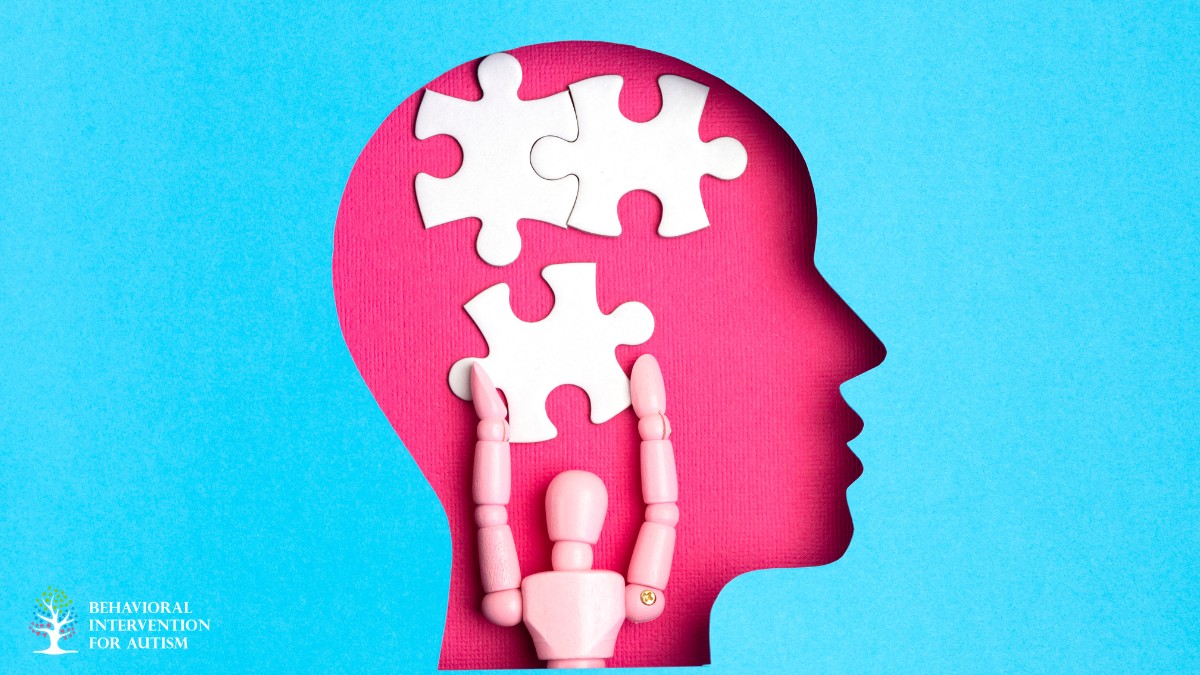
Table of Contents
Hypervigilance is a heightened state of alertness and sensitivity to one’s surroundings. For individuals with autism, this response can manifest in ways that may be both beneficial and challenging. Understanding hypervigilance in the context of autism and its impact on mental health is crucial in supporting those affected and promoting their overall well-being. In this article, we will explore what hypervigilance is, how it affects people on the autism spectrum, its underlying causes, and how individuals and their support systems can manage and cope with this condition.
What Is Hypervigilance?
Hypervigilance refers to an exaggerated state of alertness where an individual is constantly scanning their environment for potential threats. This heightened sense of awareness can be triggered by both external stimuli (such as loud noises, unexpected movements, or unfamiliar people) and internal cues (like feelings of anxiety or stress). It is commonly associated with post-traumatic stress disorder (PTSD), but can also occur in other conditions, including autism spectrum disorder (ASD).
For people with autism, hypervigilance is often intertwined with sensory sensitivities. Many individuals on the spectrum experience sensory overload, which can lead to an excessive focus on their environment in an attempt to predict or prevent discomfort. While hypervigilance can offer some protection in stressful situations, it can also result in chronic stress, anxiety, and difficulty concentrating on daily activities.
In the context of autism, hypervigilance is not always recognized as a challenge. Instead, it may be dismissed as a normal response to overstimulation. However, understanding it as a symptom that requires attention can lead to more effective strategies for managing and reducing its negative impact.
How Hypervigilance Affects People with Autism
The effects of hypervigilance on individuals with autism can be far-reaching, influencing their social interactions, emotional regulation, and daily functioning. Hypervigilance may vary in intensity, with some individuals experiencing mild discomfort and others feeling overwhelmed by constant sensory overload.
Sensory Sensitivities and Overload
People with autism often have heightened sensitivities to sensory inputs such as lights, sounds, textures, and smells. These sensory sensitivities can trigger hypervigilant behaviors as individuals may constantly monitor their surroundings to anticipate potential discomfort. For example, an individual may become fixated on a loud noise, or they may avoid certain environments because they anticipate sensory overload.
When sensory input becomes overwhelming, the brain’s stress response system can activate, triggering fight-or-flight reactions. This can cause heightened anxiety, irritability, and difficulty focusing, which can, in turn, worsen the hypervigilance.
Social and Emotional Impact
Hypervigilance can also affect social interactions. For example, individuals with autism may constantly assess the intentions of others, making it harder to relax and engage in casual social interactions. This heightened awareness may cause anxiety in group settings, especially when there are multiple stimuli, such as background noise or fast-moving people.
In some cases, hypervigilance may cause a person to avoid social situations entirely. The stress of being in public spaces or unfamiliar environments can become overwhelming, further exacerbating feelings of isolation and loneliness.
Cognitive and Behavioral Effects
Hypervigilance can also interfere with cognitive functioning, especially in the areas of attention and memory. When an individual is constantly scanning their environment for potential threats or disturbances, their ability to focus on specific tasks or engage in conversations can be compromised. This can impact academic performance, work, or other activities that require sustained attention.
Additionally, hypervigilance may lead to repetitive behaviors, as individuals seek predictability and control in an unpredictable world. These behaviors, such as hand-flapping or repetitive speech, may provide a sense of security in the midst of overwhelming stimuli.
Causes of Hypervigilance in Autism
Understanding the root causes of hypervigilance in individuals with autism requires a look at both neurological and environmental factors. Autism is a neurodevelopmental condition that affects how individuals process information and respond to sensory stimuli. Many of the same brain structures involved in sensory processing are also involved in regulating stress responses, which is why people with autism may experience hypervigilance more intensely than others.
Sensory Processing Differences
One of the primary causes of hypervigilance in autism is sensory processing differences. The brain of a person with autism may have difficulty filtering out irrelevant stimuli, making it hard to ignore certain sensory inputs. This difficulty in sensory filtering may cause the person to focus intensely on their surroundings, leading to a state of constant alertness.
For example, bright lights or loud sounds that others may not notice can be overwhelming to a person with autism. As a result, they may engage in hypervigilant behaviors like avoiding these stimuli or becoming excessively focused on them.
Anxiety and Stress
Anxiety is another significant contributor to hypervigilance. People with autism often experience heightened levels of anxiety due to social difficulties, unpredictability, and overwhelming stimuli. This anxiety can make individuals more alert and responsive to perceived threats or stressors, even when they may not be present. As a result, hypervigilance can become a learned response to constant anxiety, creating a cycle that is difficult to break.
Trauma and Adverse Experiences
In some cases, hypervigilance in individuals with autism can be linked to trauma or adverse life experiences. Although not all individuals with autism experience trauma, those who have faced challenging or unsafe situations may develop hypervigilance as a protective mechanism. Over time, these heightened responses can persist, even in safe environments.
Managing Hypervigilance in Autism
While hypervigilance can be a challenge for individuals with autism, there are several strategies that can help manage this heightened state of alertness and improve quality of life. It is essential to address hypervigilance in a holistic way, considering sensory, emotional, and cognitive factors.
Creating a Sensory-Friendly Environment
One of the most effective ways to manage hypervigilance is by creating a sensory-friendly environment. For individuals with autism, reducing sensory overload can minimize triggers for hypervigilance. This can include using noise-canceling headphones, dimming bright lights, or providing tactile items that offer comfort.
Creating quiet, predictable spaces at home, school, or work can also help reduce environmental stress. For example, setting up a quiet corner with soft lighting and calming sensory toys may offer a person with autism a refuge from overstimulating environments.
Addressing Anxiety and Stress
Since anxiety plays a significant role in hypervigilance, addressing it is key to reducing the intensity of this response. Cognitive-behavioral therapy (CBT) is one of the most widely used therapeutic approaches for managing anxiety in individuals with autism. CBT can help individuals recognize and challenge unhelpful thought patterns, such as anticipating danger or perceiving threats that are not present.
Relaxation techniques, such as deep breathing exercises, progressive muscle relaxation, and guided imagery, can also help manage stress and anxiety. Encouraging regular exercise, mindfulness practices, and a consistent routine can further support emotional regulation and reduce anxiety.
Developing Social Skills and Coping Strategies
Improving social skills and providing coping strategies for challenging situations can help individuals with autism feel more secure in social interactions. Social stories, role-playing, and communication training can assist individuals in understanding social cues and managing their emotional responses to social anxiety.
In addition, teaching individuals with autism to recognize when they are becoming overstimulated or anxious can help them take proactive steps to calm themselves before hypervigilance becomes overwhelming. This may include taking breaks, finding a quiet space, or using a fidget tool to help manage stress.
Supporting Mental Health
Supporting mental health is vital for individuals with autism who experience hypervigilance. Building a strong support network of professionals, family members, and peers can provide a sense of security and comfort. Regular counseling, therapy, and other forms of mental health support can help individuals better understand their emotional and sensory needs, fostering a greater sense of control and resilience.
Hypervigilance is an often-overlooked aspect of autism, but understanding its impact can lead to better strategies for managing the challenges associated with this condition. By addressing the sensory, emotional, and environmental factors that contribute to hypervigilance, we can improve the quality of life for individuals with autism. Through tailored interventions, support systems, and coping strategies, individuals can learn to navigate the world more comfortably and confidently, reducing the stress and anxiety that hypervigilance often brings.
Ultimately, fostering greater awareness of hypervigilance in autism can help create more inclusive environments that support the needs of individuals on the spectrum, ensuring they can thrive in all aspects of their lives.
Discover How We Can Help
Hypervigilance is often experienced by individuals with autism, leading to heightened sensitivity to their environment. This constant state of alertness can cause anxiety, stress, and difficulty focusing. Understanding how to manage hypervigilance is key to improving overall well-being. Our ABA programs in Florida are designed to address these challenges through tailored interventions, helping individuals build coping strategies and reduce anxiety. The team at Behavioral Intervention For Autism works closely with each person to ensure that our approach is both effective and compassionate. If you’re looking for support, contact us today to learn more about how we can assist you.
Sources:
https://neurodivergentinsights.com/misdiagnosis-monday/social-anxiety-or-autism
https://pmc.ncbi.nlm.nih.gov/articles/PMC7290113/
https://getgoally.com/blog/neurodiversopedia/what-is-hypervigilance/
- 9 Common Obsessions of Children With Autism You Should Know - February 25, 2025
- What is Neurodiversity? A Guide to Embracing Differences - February 25, 2025
- Understanding Hyperfocus in Autism: What It Means and Why It Happens - February 25, 2025



